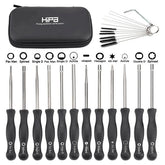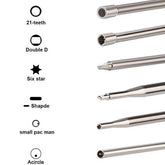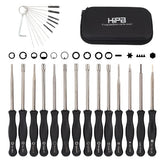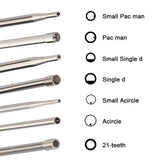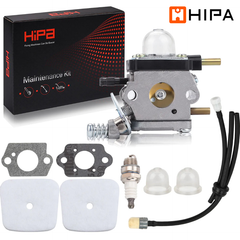How Does A Ridding Lawn Mower Work?
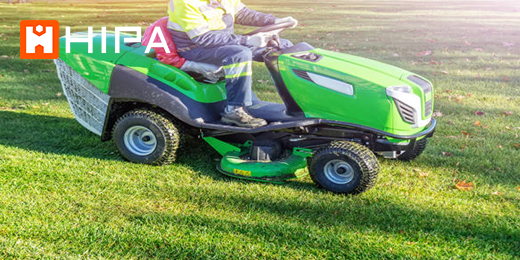
Lawn mower won’t start or won’t stay running? This blog has information on how a ridding lawn mower works and offers troubleshooting tips to help you diagnosing and repair.
Although ridding mowers can differ from model to model, they all operate on similar principles. In this blog, we will address how the mower works as well as potential problems you may encounter.
Engine
Most ridding mowers are powered by a 4-cycle engine that runs the transmission and drive wheels and rotates the cutting blades.
4-cycle engines run on gasoline and have a separate sump for oil. Similar to an automobile, riding mowers will often use an ignition switch battery and starter motor to start the engine. When the ignition switch is set to the start position, 12 volts of direct current are allowed to travel from the battery through the starter solenoid to the starter motor as well as to an anti-afterfire solenoid. When the switch is released to the run position, the current is diverted from the starter solenoid and motor to an alternator which keeps the battery charged and can run auxilary headlights or a power plug.
As the starter motor is energized, a gear engages the flywheel on the engine which rotates the crankshaft. The rotating crankshaft connects to the piston which moves up and down within the cylinder. The flywheel has permanent magnets built into it and as it rotates past the ignition coil, a magnetic field is created. The magnetic field induces electricity, allowing the ignition coil to send voltage to the spark plug. Meanwhile, the intake valve opens as the piston travels down the cylinder, creating a vacuum which draws fuel and air through the carburetor through the carburetor where it mixes before entering the cylinder. This action is called the intake stroke of the engine. Next, the compression stroke takes place as the piston travels back up to the top of the cylinder and the intake valve closes. The spark plug now fires and ignites the compressed fuel and air mixture, which forces the piston down, creating the power stroke. The momentum of the spinning flywheel provides enough force to push the piston back up. The exhaust valve opens and the combustion gases exit through the muffler. This is called the exhaust stroke. The engine will continue to run and repeat these 4-cycles until it is shut off.
Choke Lever and Engine Speed Controls
A choke lever and the engine speed controls are located close to the steering wheel for easy access. The choke will temporarily restrict airflow through the carburetor, so more fuel can enter the cylinder. If the engine does not start or it runs improperly, the most likely cause is a defective spark plug or a restricted carburetor. The carburetor can be cleaned, but it often needs to be replaced.
Fuel
Be aware that ridding mower engines are designed to use gasoline with no more than 10% ethanol. Gasoline with higher levels of ethanol can be corrosive and attract water which can cause starting or running problems and may damage the fuel system.
You should store the gasoline in a clean sealed plastic container approved for fuel storage. If equipped, close the vent when not in use and store the container away from direct sunlight. If you anticipate storing the fuel for longer than three months, consider adding a fuel stabilizer when you fill the container.
Engine Shaft and Gear Driven Transmission
The engine shaft is usually fitted with a double pulley that will transfer engine power to the transmission and cutting blade deck by two separate belts. Some ridding mowers have a gear driven transmission which uses a foot pedal to release the tension on the belt when shifting manually to different speeds or direction. Other mowers have a hydro transmission which uses a belt to turn a hydraulic pump and a cooling fan turned by the drive pulley to keep the transmission fluid cool.
Blade
The mower blades can be engaged by manually shifting a lever which moves a pulley assembly to tighten the belt or the blades may be engaged by an electrically activated clutch. Both ground speed and direction are controlled by a lever or foot pedal. The further the lever is pushed or the foot pedal is depressed, the faster the mower will go.
Some mowers are equipped with cruise control when the desired speed is reached, a lever can be pulled to keep the mower moving at a consistent speed automatically. The cruise control will be disengaged when the foot pedal is depressed or the drive lever is pulled. There is normally a release lever or rod on the transmission that can be activated to allow the drive wheels to turn freely. The drive wheels on zero-turn mowers are independently controlled while the front wheels spin freely. This allows the mower to maneuver around trees and other obstacles with ease.
The mower deck supports the spindles that the blades and pulley are attached to the number of blades needed depends on the cutting width of the deck and the length of the blades. A 30-inch cutting width will require only one blade while a cutting width of 42 inches or more will require two or three blades.
The cutting height is usually adjustable. To ensure all the grasses cut evenly beneath a wider mower deck, the blades are slightly staggered, so the cutting area between the blades is overlapped by the blades. This overlap is important, so you should be careful not to grind too much off the ends of the blades when sharpening.
If the grass between the blades is being left uncut, you should replace the blades with new ones.
Safety feature
As a safety consideration, ridding mowers will often have seat switches and reverse switch modules that will shut off the engine, if you leave the seat or shift into reverse when the blades are engaged. If the engine will not turn over when the ignition switch is actuated, make sure you are seated properly, the blades are disengaged and the shift lever is in the neutral position.
If the engine starts but the mower will not move or the blades will not rotate, it is likely that one of the belts may be slipping or broken. To keep the mower operating in good condition, regular maintenance is required, including periodic oil changes, inspecting and lubing the steering components and replacing the belts, blades, filters, and spark plug as necessary or in accordance with the owner’s manual.
Hipa Repair Center has a solution for many of the problems you may be experiencing with your chainsaw. Enter the product’s full model number in our website search engine for a complete of compatible parts. Hipastore.com also has an extensive selection of instructional blogs to assist you covering topics like part replacement. At hipastore.com, we make fixing things easier.
Revive Your Machine With Hipa All-In-One Kit
Please let us know if this works and if you have any suggestions or comments. Or you can join HIPA DIY COMMUNITY to feature your passion for repair projects, share your stories with the Hipa family and get help from Hipa.













